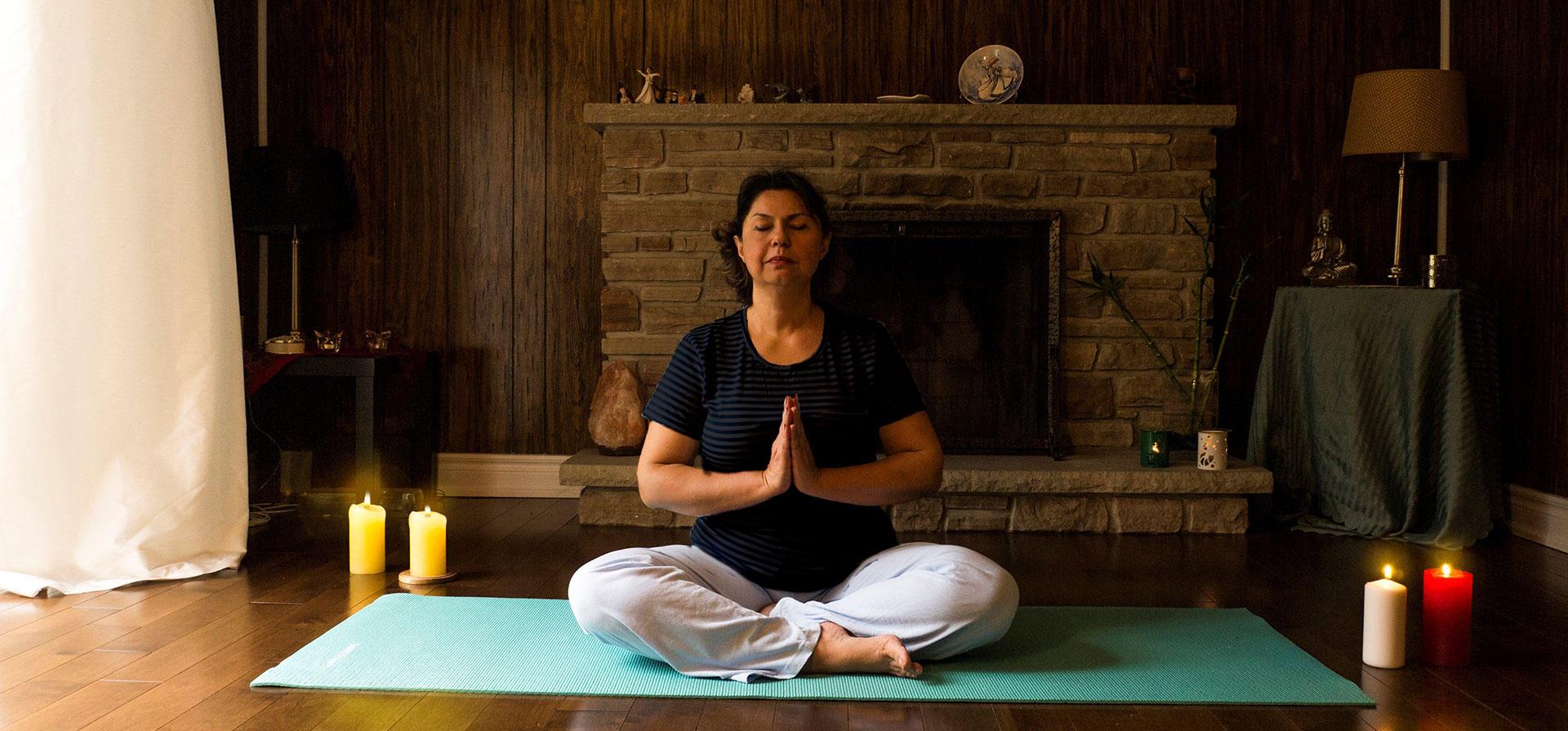
WHAT IS MEDITATION?
Meditation is a word that has come to be used loosely and inaccurately in the modern world. That is why there is so much confusion about how to practice it. Some people use the word meditate when they mean thinking or contemplating; others use it to refer to daydreaming or fantasizing and some people think they must stop thinking during meditation. However, meditation (dhyana) is not any of these.
Meditation is very simple. It is simply attending. You can begin by attending to your breath, and then if a thought comes, attend to it, notice it, be open to it—and it will pass. Then you can come back to the breath.
The goal of meditation is to go beyond the mind and experience our essential nature—which is described as peace, happiness, and bliss. But as anyone who has tried to meditate knows, the mind itself is the biggest obstacle standing between ourselves and this awareness.
Meditation is essential to feel well and live a Happy Life. Meditation can help us to eliminate negative thoughts, worries, anxiety, all factors that can prevent us feeling happy.
Types of meditation
- Within each type of meditation, there are several sub-types to discover and practice.
- Meditation teachers have different ideas about how frequently a person should meditate.
- It is fine to blend types or to test different approaches until the right one is found.
The following seven examples are some of the best-known ways to meditate:
1.Loving-kindness Meditation
Its goal is to cultivate an attitude of love and kindness toward everything, even a person’s enemies and sources of stress.
While breathing deeply, practitioners open their minds to receiving loving kindness. They then send messages of loving kindness to the world, to specific people, or to their loved ones.
In most forms of this meditation, the key is to repeat the message many times, until the practitioner feels an attitude of loving kindness.
It can help those affected by:
- Anger, frustration, resentment, and interpersonal conflict
2.Body scan or progressive relaxation
Progressive relaxation, sometimes called body scan meditation, is meditation that encourages people to scan their bodies for areas of tension. The goal is to notice tension and to allow it to release.
Some forms of progressive relaxation require people to tense and then relax muscles. Others encourage a person to visualize a wave, drifting over their body to release tension.
3.Mindfulness meditation
Mindfulness is a meditation that needs to remain aware and be present at the moment
Mindfulness meditation is something people can do almost anywhere. While waiting in line at the grocery store, for example, a person might calmly notice their surroundings, including the sights, sounds, and smells they experience.
A form of mindfulness is involved in most kinds of meditation. Breath awareness encourages practitioners to be aware of their breathing, while progressive relaxation draws attention to areas of tension in the body.
Mindfulness can:
- reduce fixation on negative emotions
- improve focus
- improve memory
- lessen impulsive, emotional reactions
- improve relationship satisfaction
4.Breath awareness meditation
Breath awareness is a type of mindful meditation that encourages mindful breathing.
Practitioners breathe slowly and deeply, counting their breaths or otherwise focusing on their breaths.
Benefit of this meditation are as same as mindfulness include reduced anxiety, improved concentration, and greater emotional flexibility.
5.Kundalini yoga Meditation
This meditation is a physically active form of meditation that blends movements with deep breathing and mantras. People usually learn from a teacher or do a class.
Kundalini yoga meditation improve physical strength and reduce pain. It may also improve mental health by reducing anxiety and depression.
6.Zen Meditation
Zen Meditation is a form of meditation that can be part of Buddhist practice. Many Zen practitioners study under a teacher because this kind of meditation involves specific steps and postures.
7.Transcendental Meditation
Transcendental Meditation is a spiritual form of meditation where practitioners remain seated and breathe slowly. The goal is to transcend or rise above the person’s current state of being.
People who practice Transcendental Meditation report both spiritual experiences and heightened mindfulness.
With the many types of meditation to try, there should be one to suit most individuals.
Benefits of Meditation
The physical, emotional,psychological, and spiritual benefits of meditation might include:
- Higher level levels of energy, creativity, and spontaneity
- Lower blood pressure
- increased exercise tolerance
- Better concentration
- Decrease stress, depression and anxiety
- Fewer cravings for alcohol and cigarettes
- Increases job satisfaction
- Better relationship with others
